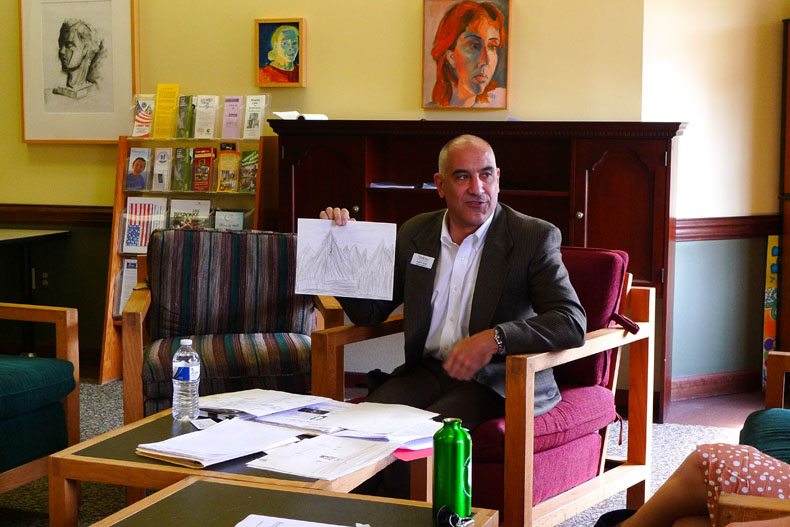“There’s an old story about a community having a picnic,” Executive Director of Child Development Resources Paul Scott said last Tuesday. “They hear a child screaming — drowning in the river — so the whole town goes to save him. Right when they are getting the child out, another child is thrown into the river upstream, and then more after that. Then one person says, ‘We need to go upriver and find out who is throwing our children into the river.’”
This idea was central to the argument Scott presented to the audience that sat in Blow Memorial Hall to listen to his expertise in dealing with child sexual abuse. The talk, sponsored by the Office of Community Engagement and Scholarship, shed light on a matter not often addressed in society today.
“Sexual abuse is rarely discussed openly, but affects so many members of our community, including the children and adolescents our students volunteer with,” Associate Director of Community Engagement Melody Porter said. “By becoming more educated about how it [affects] victims, survivors and offenders, we can work to reduce its prevalence and effects.”
Scott works on a daily basis with children who suffer from sexual abuse to help them express what happened to them, especially for court cases, and to help them cope with the long-lasting emotional repercussions of this abuse. However, he has also worked on the other side — with children, adolescent and teen offenders — to help diagnose psychological problems and save society from the creation of many new victims.
“I was shocked to hear about the situations into which many of these children have been placed. The horrible, cyclical effect of these crimes really becomes clear when you hear about parents acting inappropriately or exposing their children to very sexually charged situations,” Americorps Volunteer in Service to America and Advisor to Campus Kitchens Chelsea Estancona ’11 said referring to a story about a grandmother who brought her grandson to a strip club.
A large part of the emotional damage incurred in many victims is due to the fact that he or she knew and felt safe around the offender. “Stranger danger,” for many years, was the phrase parents yelled to their children when they left for a friend’s house or were walking to the bus stop. Although it is a valid worry, more than 90 percent of the offenders caught are known to the victim or to the victim’s family.
Two-thirds of offenders are victims of sexual abuse themselves, and men severely molested as children who become offenders will statistically have three times the number of victims. What’s more shocking is that 40 percent of pedophiles admit that their first offense was committed by the age of 15. There are many fewer studies and much less statistical information on female offenders; however, that is not to say they do not exist.
“One of the main things I learned was about the spectrum of both offending behaviors and of intervention and counseling measures,” Estancona said. “I was also unaware that many of the offenders are adolescents themselves, many of whom were recently victims.”
There’s a new strategy of diagnosis directed at children that asks them to draw pictures of their feelings and the things that happened to them, instead of asking them to articulate these things into words. Art therapists then analyze the pictures and propose possible meanings in the work, which are later addressed with the child.
“Kids use metaphors,” Scott said. “A picture is worth a thousand words but a metaphor is worth a thousand pictures. You can find so many metaphors in their drawings.”
Without enough money to increase the number of resources available to those who need help the most, the conviction of pedophilic offenders remains unchanging, offenders consistently continue to be released on appeal, and at the same time the number of sexually abused children increases each day.
“The presentation made me realize more of the complexities of treating and healing when sexual abuse happens — how it affects the victims and survivors, the offenders and those who are in contact and relationships with all who are affected,” Porter said.


[…] Paul Scott shares insights on the issue of youngster abuse There's a new approach of prognosis directed at kids that asks them to draw photographs of their feelings and the factors that happened to them, instead of inquiring them to articulate these items into words. Artwork therapists then assess the photographs and … Go through much more on The Flat Hat […]